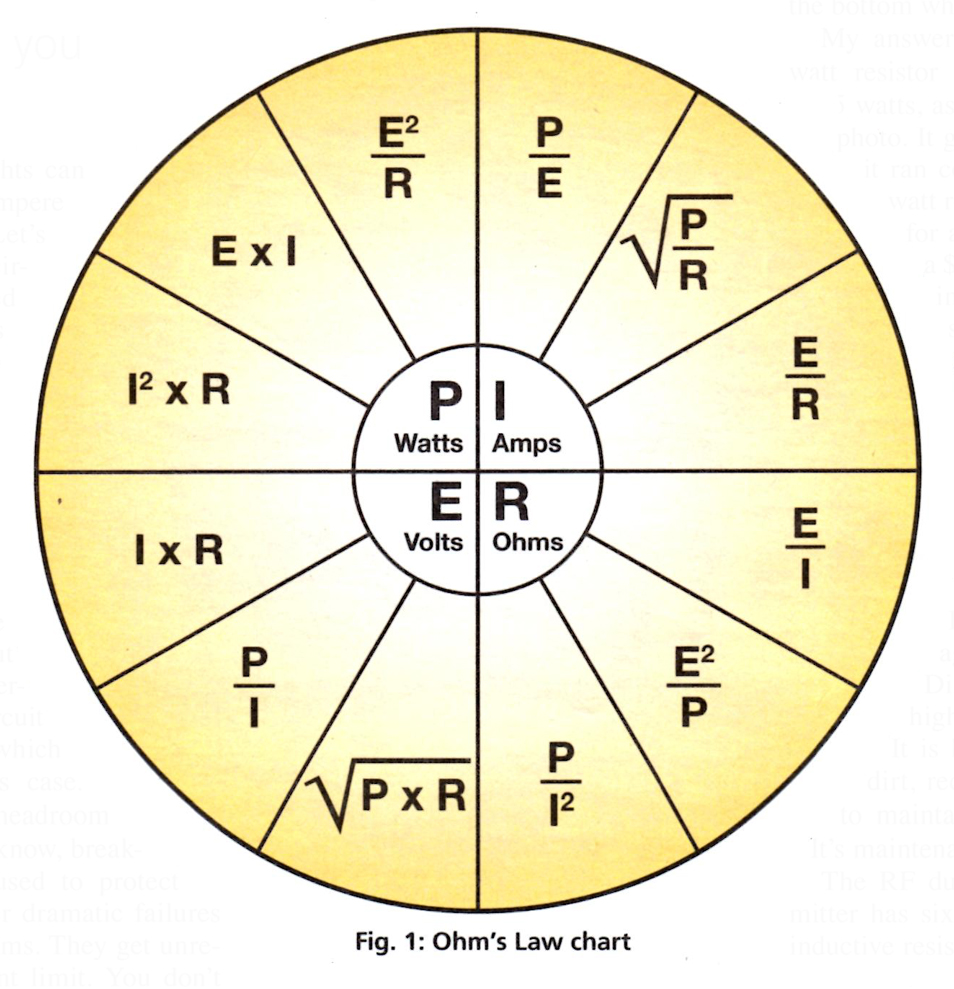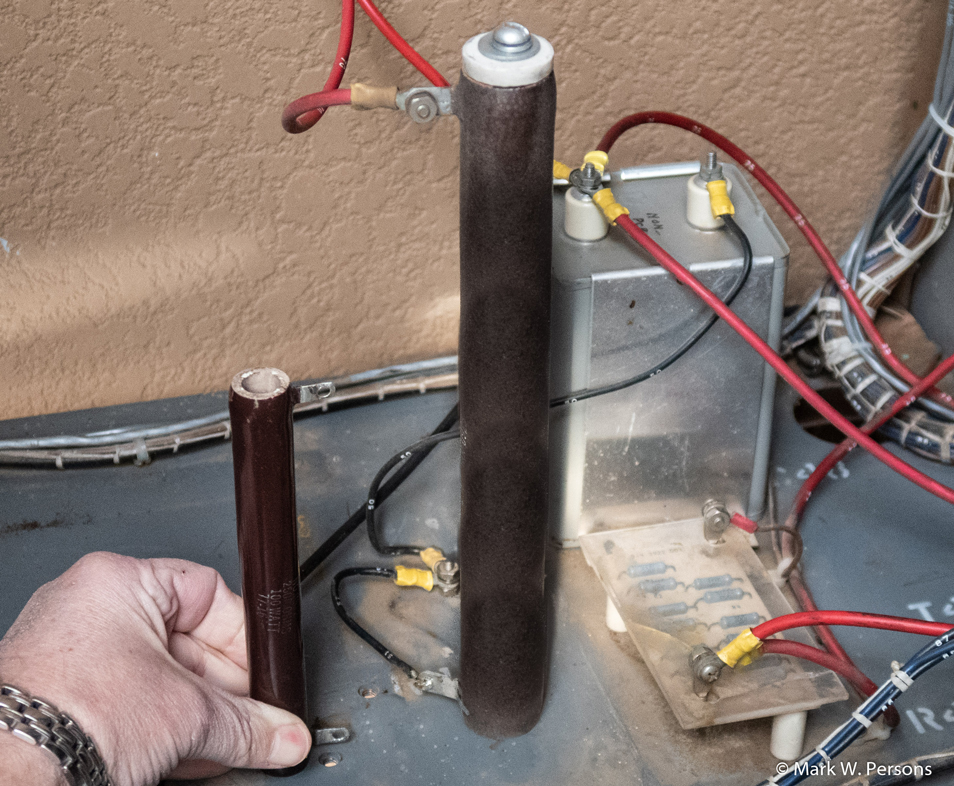
 |
|
|||||||||
|
|
 |
||||||||
 |
Ohm's Law Answers Your Questions by Mark Persons |
Radio
World Article January 16, 2019 |
|
Understanding these concepts will help you solve more than theoretical problems |
|
|
 |
|
Fig. 1 is a list of simple formulas for using Ohmís Law. Nothing complicated, just good answers to your questions. You donít need to be a mathematician to run the calculations. The calculator on your Smartphone will handle this easily. P is for power in watts, I is current in amperes, R is resistance in ohms and E is voltage in volts. Solve for any of those knowing two of the other parameters.
OHMíS LAW ON
CURRENT |
 |
|
Fig. 2: Bleeder resistors in a Gates BC-1G transmitter |
|
OHM'S LAW ON
WATTS The bleeder in a Gates BC-1G transmitter is R41, a 100,000 ohm/100 watt wire-wound resistor. You see one hand-held on the left side of the photo in Fig. 2. Ohmís Law tells us that 2600 volts across the resistor squared (times itself) then divided by 100,000 ohms resistance equals 67.6 watts of power dissipation required on a continuous basis on a 100 watt resistor. You would think that the 32.4-percent safety margin would be enough. This resistor typically failed after 10 years of use. The answer is in the ventilation the resistor gets for cooling. The 67.6 watts in heat has to go somewhere. This transmitter model has some, but not a lot, of air flow on the bottom where the resistor is located. My answer was to replace the 100 watt resistor with a resistor rated at 225 watts, as seen in the center of the photo. It gave more surface area so it ran cooler, thus longer. A 100 watt resistor is $15.14 vs $18.64 for a 225 watt unit. It is only a $3.50 difference for a huge increase in reliability and safety. The screw that holds it in place will need to be longer if you do this modification. No big deal. Yes, there is a meter multiplier resistor string next to the resistor and high-voltage capacitor. It samples the high voltage for the PA voltmeter. Dirt has accumulated on the high-voltage end of the string. It is high voltage that attracts dirt, requiring frequent cleaning to maintain transmitter reliability. Itís maintenance. The RF dummy load in this transmitter has six 312 ohm/200 watt non-inductive resistors. The transmitter sees the 52 ohms because the resistors are in parallel. Simple math, 312 ohms divided by 6 resistors = 52 ohms. Yes, 52 ohms, 51.5 ohms, 70 ohms and other impedances were common in the past before solid-state transmitters more or less forced the standard to be 50 ohms. Tube-based transmitters will tune into almost any load while solid-state transmitters are designed to perform into 50 ohm loadsÖ.and donít give me no VSWR!
OHMíS LAW ON
VOLTAGE
OHM'S LAW ON
POWER
HALF POWER? Think Ohmís Law when you are on the job. It answers your questions and makes perfect sense. Mark Persons, ham W0MH, is an SBE Certified Professional Broadcast Engineer; he was named the Robert W. Flanders SBE Engineer of the Year for 2018. Mark is now retired after more than 40 years in business. His website is www.mwpersons.com. |
|
This is a reprint of the article which appeared in the online
version of Radio World at:
https://www.radioworld.com/columns-and-views/ohms-law-answers-your-questions |
| Email: January 24, 2019: Great piece on Ohmís Law in Radio World. Thanks for taking the time, and thank you for sharing. 73s Dolf Santorine, ham AD0LF Wheeling, West Virginia |
|
Questions? Email Mark Persons: teki@mwpersons.com |
|
.